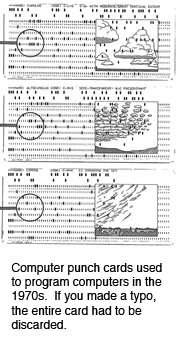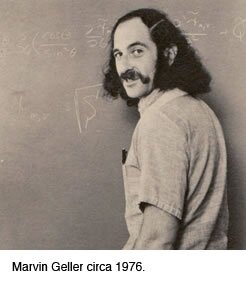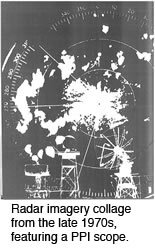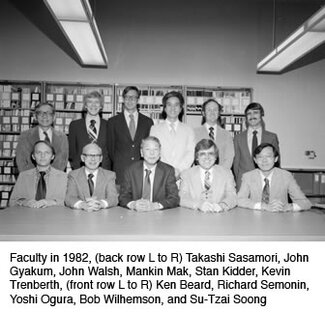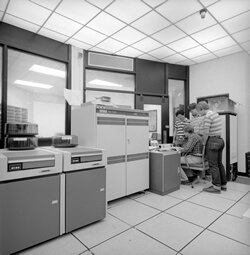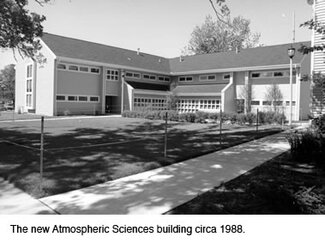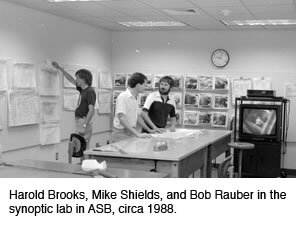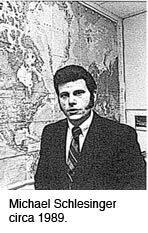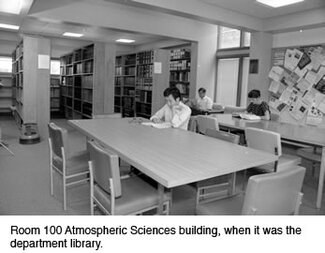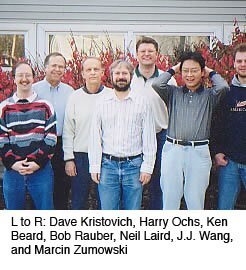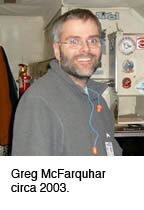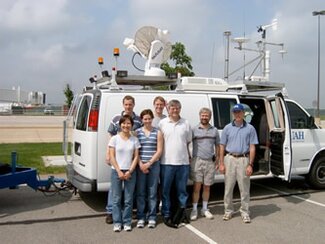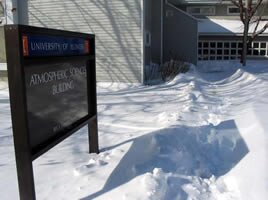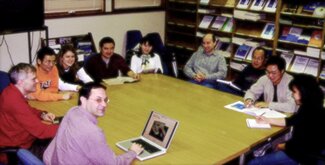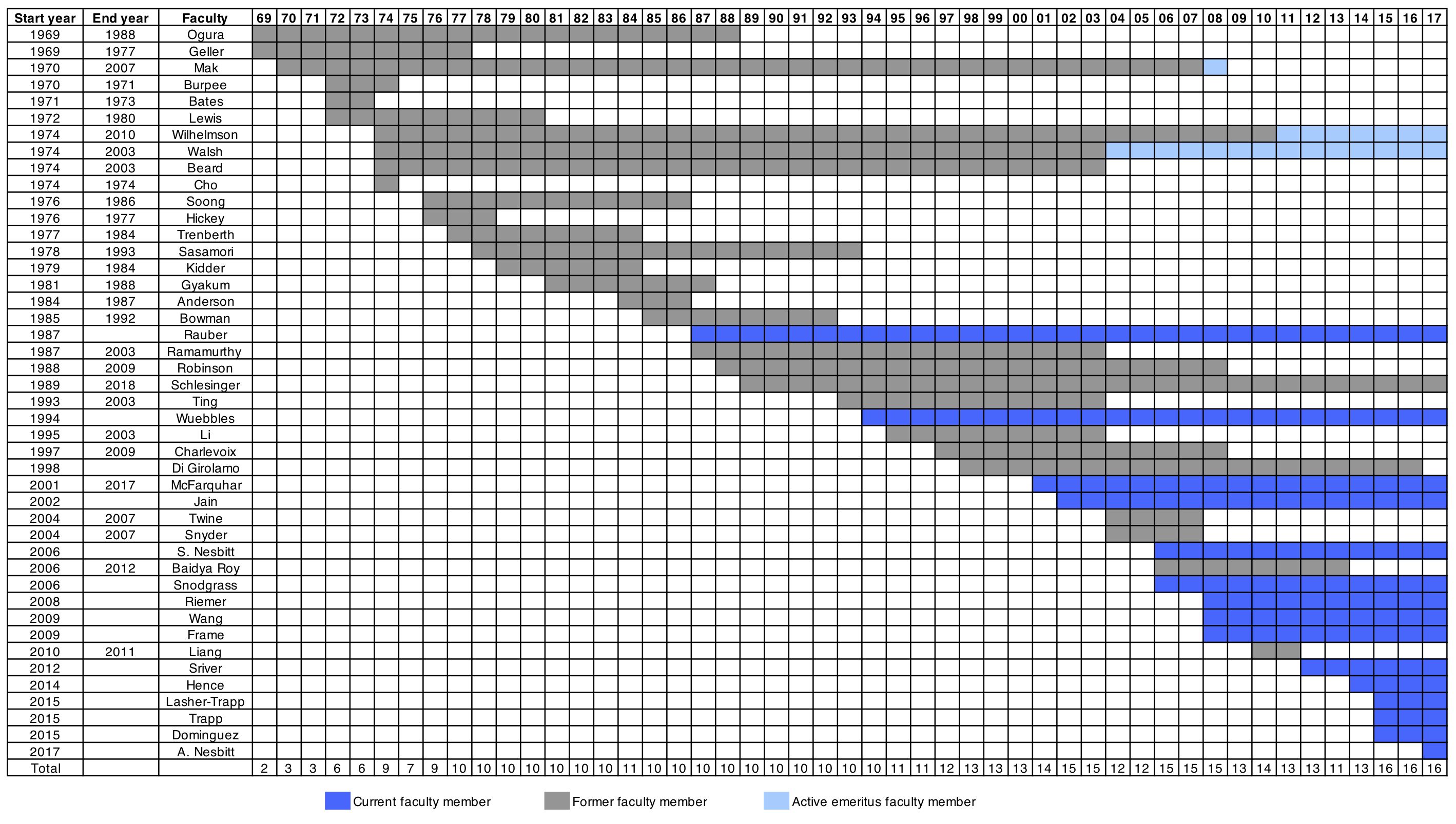DEPARTMENT OF CliMAS ARTIFACTS
Below are a collection of announcements, brochures and photos.
1977 Atmospheric Sciences Program Brochure
1982 AMS Bulletin Announcing Our Department
1989 Atmospheric Sciences Brochure
DEPARTMENT FACTS & HISTORY
The Early Years
The Department of Atmospheric Sciences (DAS) had its beginnings in 1969 with the arrival of Professor Yoshimitsu Ogura to the University of Illinois campus. Professor Ogura was recruited from Japan by the University of Illinois to establish a Laboratory for Atmospheric Research (LAR) within the Graduate College. The goal was to create a graduate program on campus that would specialize in atmospheric research. At that time, Professor Ogura was a professor of marine meteorology at the University of Tokyo and the director of Japan’s Ocean Research Institute. Even then, he was no stranger to the U.S. system of academic institutions. Upon getting his doctoral degree in Meteorology in 1954 from the University of Tokyo, he had spent two years at Johns Hopkins University and six years at MIT as a visiting research scientist. He went back to University of Tokyo as a faculty member afterward, only to return again to the U.S. in 1969 and remain with our Department until 1988.
Yoshi Ogura laid the foundation for DAS by recruiting a handful of newly graduated Ph.D.’s as faculty members in the first few years of his tenure at the University. Marvin Geller had been previously hired as an Assistant Professor in Electrical Engineering, arriving at U of I about one week before Professor Ogura arrived, and he immediately began a joint affiliation with LAR. Marv Geller remembers meeting Yoshi for the first time in an office with a desk and surrounded by book cartons. Yoshi, appreciating the importance of a good library, had initiated his book and journal orders from Japan. During the following few years, Mankin Mak, J. Ray Bates, Robert Burpee and John Lewis were hired, also as Assistant Professors. Together, they initiated a multi-faceted research program and designed a suite of graduate courses in atmospheric sciences. They also began supervising the thesis research of a number of physics, electrical engineering, and computer science graduate students at the University who wished to become atmospheric scientists.
LAR was very fortunate in these early days to have excellent relations with the Department of Physics, Computer Sciences, and Electrical Engineering. Through this arrangement, LAR faculty members gained access to excellent graduate students. In these early days, Yoshi had a large number of young scientists from Japan, who had extended research visits to Illinois. Many of them went on to hold senior positions in Japanese universities and at JMA. J. Ray Bates left the department in 1973 to return to his native Ireland, and Robert Burpee resigned in 1974 to move to the National Hurricane Center, where he later became director. They were replaced in 1974 by John Walsh, Ken Beard and Bob Wilhelmson, three professors who, together with Professor Mak, guided the Department for the next three decades. Marvin Geller left Illinois in 1977 to join the faculty of the University of Miami. Bob Wilhelmson also has the honor of being the first Ph.D. to be advised by a DAS faculty member (Ogura), although Bob received his degree from the Computer Science Department. Other students advised by DAS faculty in the early years included Wayne Higgins, Mark Schoeberl, Mary Alice Rennick, Louis Gidel, James Russell, Roger Brode, Stephen Bloom, David Fritts, Tony Barnston, and Susan Avery. Susan Avery has the honor of earning the first Atmospheric Science degree, her Ph.D. in the field of Atmospheric Sciences at the University of Illinois. She received her Ph.D. in 1978, received the College of Liberal Arts and Sciences Alumni Achievement Award in 2005, was interim provost and executive vice chancellor for academic affairs at the University of Colorado, and in 2007, took over as President and Director of the Woods Hole Oceanographic Institute.
During the early years, and on through 1986, the LAR and DAS were located on the 5th floor (and later the 6th floor) of the Coordinated Science Laboratory (now called the Engineering Sciences Building) on the southeast corner of Goodwin and Springfield. In the early days, atmospheric scientists from the US and Japan were often involved in lively table tennis games on the 6th floor. At that time, the Department had an Alfax machine that produced “wet” weather maps that had to dry after printing. These maps were hung along the hallways of CSL. The department eventually expanded to occupy the 6th floor as well. The department also started development of a small library, which grew until it was merged with the University Library system in 2006. The year 1974 was also memorable as that was the year that Karen Garrelts joined DAS as its administrative secretary. Karen maintained organization in the Department and provided guidance to many students over a career lasting 28 years until her retirement in 2002. Another long time department member, Norene McGhiey, joined the office staff in 1981 and retired in 2000.
The decade of the 1970s saw the department grow from two faculty members in 1969 to ten in 1977. This growth spurt was followed by a “steady state” period between 1978 and 1982 when faculty numbers remained constant at ten. Although the number stayed constant, some names changed. Incoming faculty members in the 1970s and early 1980s included Han-Ru Cho, Kevin Trenberth, Takashi Sasamori, Su-Tzai Soong, Stan Kidder, Brian Hickey, and John Gyakum.
The New Department
The year 1982 was a landmark in Department history. This was the year when the Laboratory for Atmospheric Research became the Department of Atmospheric Sciences. The announcement to the world, made in the Bulletin of the American Meteorological Society as an article under Educational Affairs, followed the approval by the Illinois Board of Higher Education (IHBE). The Department formed within the University of Illinois’s Graduate College, and offered only advanced degrees. Two new faculty, Ken Bowman and John Anderson joined the faculty in 1982 and 1984, shortly after the Department formation. The academic year beginning in 1985 also brought another landmark. After 16 years of service, Yoshi Ogura stepped down as Department Head. The leadership of the Department was turned over to Professor Mankin Mak, who continued as Department Head until 1993. Yoshi continued as Professor until 1988, after which he retired and returned to Japan. He has been spending his retirement with his wife Masako in Tokyo ever since. In honor of his unique contributions, the Department initiated an annual lecture series in 1988, the Ogura Lecture. In the past 20 years, many distinguished scientists have been invited to speak on topics attractive not only to atmospheric science but also to the general student body and faculty on campus.
The Coordinated Science Laboratory on Goodwin and Springfield was “owned” by the Engineering College, and a space crunch forced the college to reclaim the 5th and 6th floors of CSL. The University agreed at that time to find a new home for DAS, and decided after some negotiation to build a new building on S. Gregory St. in Urbana, just north of the Astronomy Building. Plans were drawn for the building, but the move out of CSL had to occur before the new building could be built. To accommodate the Department staff, the Department was temporarily moved to south campus in the Old Veterinary Medicine (“Old Vet Med”) building. For about a year, those of us who were around then had the pleasure of riding the “cattle elevator” from the parking area to the second floor of Old Vet Med. During the Old Vet Med stint, Professors Rauber, Ramamurthy, and Robinson were hired.
It took about a year to construct the new building. The move into the new building occurred in December 1987, right after a major blizzard. Somehow everything got moved despite the snow, and the Department began occupancy of the building where it is still housed today. Two new faculty, Michael Schlesinger and Mingfang Ting, joined the faculty in 1989 and 1993, respectively. The next major event in Department history occurred in 1993. When the Department first formed in 1982, we were housed in the Graduate College, a College that traditionally does not have academic departments. In 1993, the Department, mandated to find a new academic home, moved into the College of Liberal Arts and Sciences. In the same year, Professor Mak stepped down as Department Head. Bob Wilhelmson became Acting Head while a search was conducted for a new Head. The search culminated with the hiring of Don Wuebbles, who served as Department Head from 1994 to 1996, at which time he was asked to take the position of the first director of the newly formed Environmental Council. Don led the Environmental Council until 2000, after which he returned to the Department Head position. During Don’s tenure at the Environmental Council, Bob Wilhelmson again took over leadership of the Department as its Acting Head.
THE 1990S AND THE ARRIVAL OF THE INTERNET
The 1990s were a period of rapid change in the Department, driven by advances incomputer technology, particularly the widespread use of personal computers, the development of the first Internet browser (Mosaic) at the University of Illinois, advances in high speed computing, the widespread use of the Internet, and collaborations with the National Center for Supercomputing Applications (NCSA), which organized on campus in 1986. Under Mohan Ramamurthy’s leadership, the Department launched Weather World 2010, one of the first comprehensive guides to weather on the Internet. Bob Wilhelmson’s brought international visibility to the Department in the area of storm visualization. Under the direction of Michael Schlesinger and of Don Wuebbles, our Department became a force in the climate change arena. During the mid 1990s, Zuangjie Li joined the Department, expanding Department research into laboratory atmospheric chemistry.
A major goal of the Department in the late 1990s was to expand our undergraduate survey courses. In 1997, the Department hired Donna Charlevoix to lead our undergraduate survey classes. Under Donna’s leadership, the number of students in the survey classes ATMS 100 and 120 increased by a factor of almost 20, and our survey courses have become the most popular on campus. For her efforts, Donna received the LAS and Campus Awards for Excellence in Undergraduate Teaching in 2003.
Don Wuebbles returned from the Environmental Council to take over the leadership of the Department again in 2000. The turn of the century also brought three new faculty to the Department, Larry Di Girolamo, Greg McFarquhar and Atul Jain. These three additions significantly strengthened the Department’s reputation in the fields of cloud and precipitation physics, radiation, remote sensing, and climate impacts. The Department also expanded in number of graduate students and staff, so much so that we overflowed the building. The University gave us space in Annex I and Annex II, the two infamous rather run down buildings that we still occupy today. Space remains an issue with the Department, a problem which we hope to solve by moving into the Natural History Building following its renovation.
THE FIRST DECADE OF THE 21ST CENTURY
The new century brought many changes to the Department. From the Department’s beginnings, it was strictly a graduate department, offering M.S. and Ph.D. degrees. In the fall of 2007, an undergraduate major in Atmospheric Sciences was approved by the University and State of Illinois. To accommodate this change the Department designed a whole new suite of courses for the major, and redesigned many of the graduate course offerings to expand the curriculum. The first courses were introduced in Fall 2008.
When the Department was created in 1982, it was initially in the University’s Graduate College. In 1993, the Department moved into the College of Liberal Arts and Sciences (LAS), the University’s largest college, which currently has 60 departments and institutes. Our Department has established mutual research interests with other LAS departments since that move, particularly with our sister geosciences departments, Geology and Geography. In 2007, DAS joined with these departments to form the School of Earth, Society, and the Environment within LAS. The School of Earth, Society, and Environment is the 5th School within the College and is headquartered in the Natural History Building. As part of a School initiative to develop research in the area of Water as a Complex Environmental System, the Department hired several new faculty, Tracy Twine, Peter Snyder, Steve Nesbitt and Somnath Baidya Roy. Another new faculty member, Nicole Riemer, joined the faculty in 2008. Because of the success of our undergraduate survey courses, a second instructor position was created, filled by our our alumnus, Eric Snodgrass. The first decade of the 21st century also marked the retirement of Ken Beard, John Walsh and Mankin Mak, three faculty members distinguished by their long outstanding service to the Department, and of Peggy Cook, our Department administrative secretary who served from 2002-2007.
As we move forward, we are challenged to make our undergraduate program one of the best in the nation, and the School a powerful tool for collaborative research. Having moved into the Natural History Building during the summer of 2017, we are constantly working to enhance our opportunities for collaborative research with Geology and Geography faculty.
